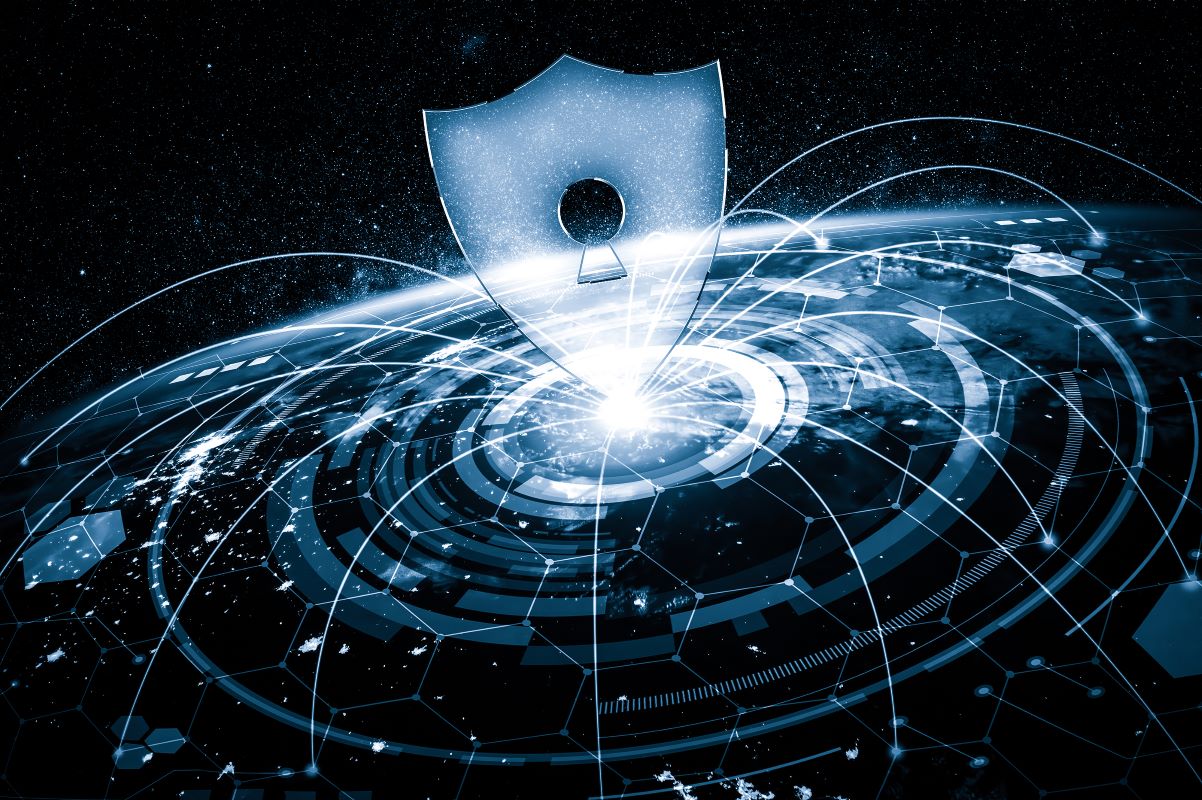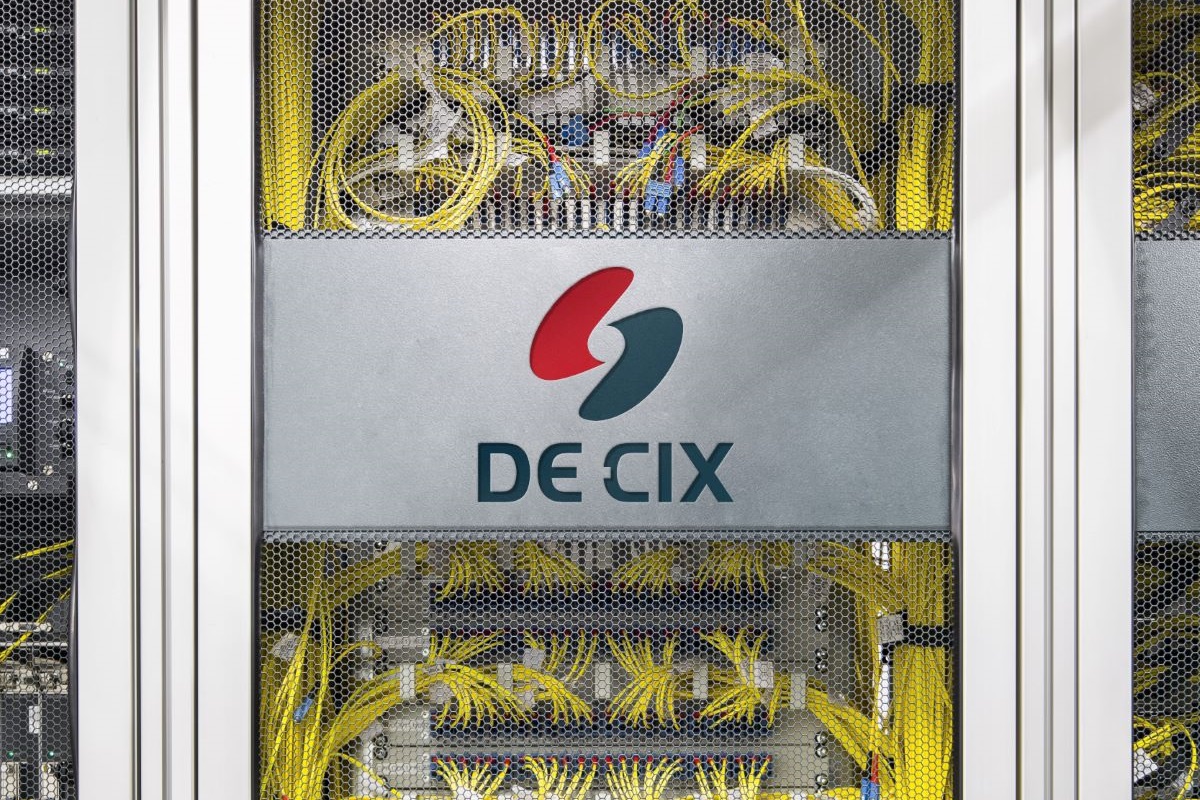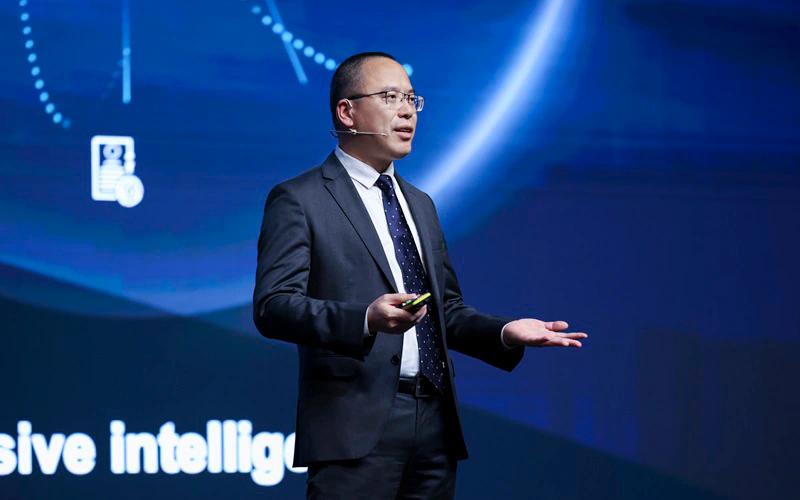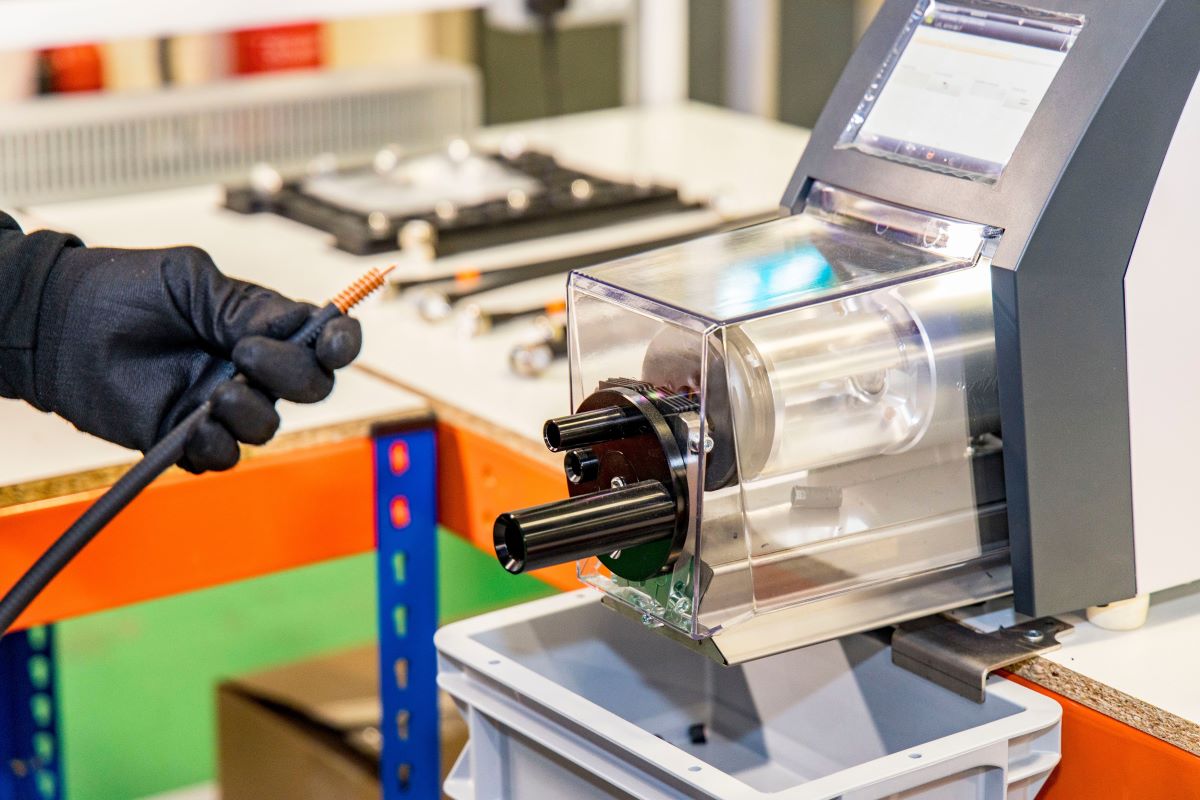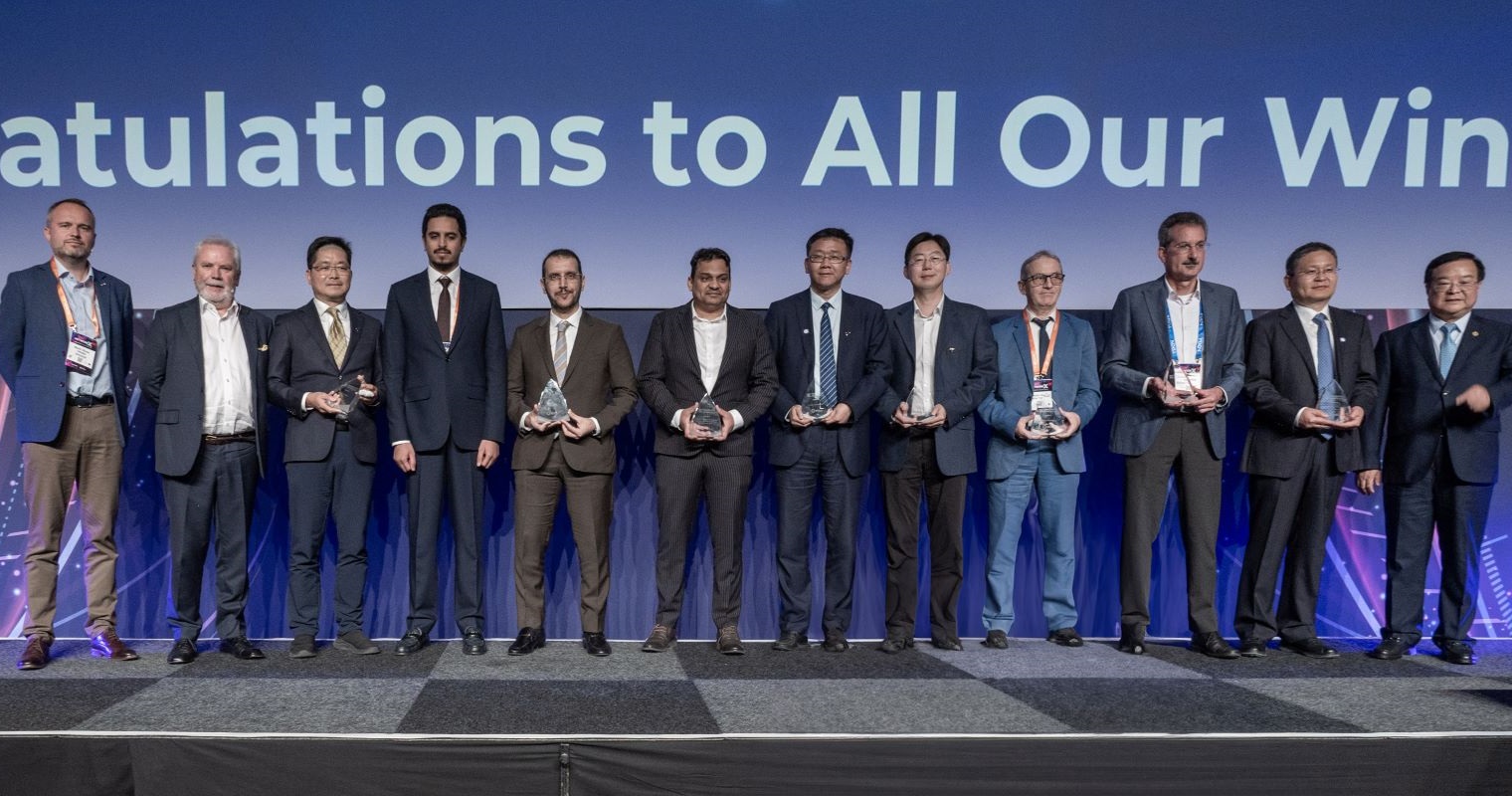Networking
Cloud
Networking
News
CtrlS Datacenters announces direct access to Oracle Cloud
CtrlS Datacenters, Asia’s largest Rated-4 data centre operator and a member of Oracle PartnerNetwork (OPN), today announced it will offer its customers direct high-speed connectivity to Oracle’s cloud and AI services through Oracle Cloud Infrastructure (OCI) FastConnect.
Organisations can harness the power of AI and a full suite of over 150 cloud services, including Oracle Autonomous Database, using the Oracle Cloud Mumbai Region and the Oracle Cloud Hyderabad Region to unlock innovation and drive business growth.
Through dedicated 2x100G Partner ports, CtrlS Datacenters offers customers both shared and dedicated access to OCI FastConnect. This enables organisations to:
• Reduce latency and improve performance: experience faster data transfer, minimising lags and disruptions for optimal application performance• Enhance security: dedicated network paths and robust encryption help ensure secure migration and management of workloads in OCI• Increase agility and scalability: scale cloud resources to support evolving business needs, fostering greater flexibility and adaptability
This collaboration with Oracle is designed to empower organisations in key markets, such as Hyderabad and Mumbai, to access OCI services with enhanced speed, security, and reliability. Customers across all CtrlS data centres will be able to get the OCI FastConnect nodes in Hyderabad and Mumbai.
With OCI, customers can benefit from best-in-class security, consistent high-performance, simple and predictable pricing, and the tools and expertise needed to bring enterprise workloads to cloud quickly and efficiently.
Beyond Mumbai and Hyderabad, enterprise customers of CtrlS Datacenters across all markets (Bangalore, Noida, Lucknow, and Patna) can benefit from OCI FastConnect through their Cloud Connect portfolio. Chennai and Kolkata will follow soon. This solution leverages diverse connectivity options to deliver secure and reliable access to OCI, regardless of physical location.
Sridhar Pinnapureddy, Founder & Chairman, CtrlS Datacenters & Cloud4C, comments, "Our unwavering commitment lies in being a market leader, not just in Rated-4 data centres, but also in building a comprehensive interconnection ecosystem that empowers businesses across India. Partnering with Oracle to provide direct access connectivity options to OCI marks a significant step towards this vision.
“It's not just about offering services; it's about equipping organisations with the agility and security they need to thrive in the cloud-driven era. This expansion reinforces our dedication to bridging the gap between ambition and achievement, propelling organisations toward a brighter future."
OCI’s extensive network of more than 100 FastConnect global and regional partners offers customers dedicated connectivity to Oracle Cloud regions, providing customers with optimal cloud deployment options anywhere in the world.
For more from CtrlS Datacenters, click here.
Simon Rowley - 12 November 2024
Networking
News
Security
Singtel expands its suite of quantum-safe offerings
Singtel today announced that it will be enhancing its suite of quantum-safe offerings to help enterprises fortify their defences against cyber threats and scale more securely in the quantum age.
This involves integrating Post-Quantum Cryptography (PQC) technology, which is algorithms engineered to resist the computational power of attacks from quantum computers, from leading cybersecurity solutions providers, Palo Alto Networks and Fortinet, into Singtel’s nationwide Quantum Safe Network (QSN).
As part of the collaboration, Palo Alto Networks will protect against quantum threats with a PQC IPSec (Internet Protocol Security) virtual private network (VPN), using the new post-quantum encryption standards established by the US National Institute of Standards and Technology for secure data transmission and authentication.
Fortinet’s quantum-compatible solutions will integrate PQC and Quantum Key Distribution (QKD), which is a secure method for distributing encryption keys only known between shared parties, to support the development of a secure, scalable, and commercially viable QSN for Singtel. Singtel will leverage Fortinet’s quantum-resistant PQC software, hardware encryptors, and advanced platforms to build robust quantum-safe architectures and solutions tailored for enterprise needs. Together, these partnerships will ensure that encryption keys remain secure across diverse applications, including identity, mobility, and authentication services – creating a more resilient defence for enterprises against cyber threats.
Keith Leong, Managing Director, Enterprise, Singtel Singapore, says, “Quantum computing presents a significant threat to traditional encryption methods, and has the potential to disrupt our digital economy by potentially decrypting sensitive data, exposing businesses to significant risks. The addition of Palo Alto Network and Fortinet’s enhanced software solutions to our QSN ensures our enterprise customers get more industry-leading choices to secure their business against both current and future quantum threats, regardless of their hardware requirements. We encourage enterprises to take the necessary steps to secure their critical assets sooner rather than later.”
Steven Scheurmann, Regional Vice President of Palo Alto Networks in ASEAN, adds, “Quantum computing represents a revolutionary technology that promises tremendous advancements but also introduces potential risks, especially for data security. At Palo Alto Networks, we are committed to helping enterprises prepare for this future. By integrating our quantum-resistant VPN solutions with Singtel's Quantum-Safe Network, we're ensuring that customers can safeguard critical data against both current threats and encryption-breaking capabilities of future quantum computers. It's essential to take action today to secure tomorrow's digital landscape and we are proud to be part of Singtel's efforts to lead in this space.”
Jess Ng, Country Head, Singapore and Brunei, Fortinet, remarks, “As quantum computing evolves, so must our approach to cybersecurity. Fortinet is proud to collaborate with Singtel to strengthen the nation’s defences against emerging threats. By integrating Post-Quantum Cryptography (PQC) and Quantum Key Distribution (QKD) into Singtel’s Quantum-Safe Network, building hybrid architecture, and leveraging quantum-safe solutions, we are helping enterprises stay ahead of future risks. Through the development of industrial and government use cases, we are committed to building a foundation for a more resilient and secure digital future.”
Following the Infocomm Media Development Authority’s appointment last year to develop a nationwide QSN to fortify Singapore’s resilience against quantum threats, Singtel launched the nation’s first QSN with global leader in quantum-safe cryptographic solutions, ID Quantique (IDQ).
IDQ recently released a comprehensive and field-proven quantum-safe key exchange platform, Clarion KX, to manage hybrid cryptography on the network and facilitate large scale deployments of integrated quantum-safe networks. By hybridising PQC algorithm-based encryption and quantum physics-based communication security, Clarion KX ensures a highly secure quantum key distribution across Singtel’s QSN locations and provides enterprises with a cost-effective solution for long-term quantum-resilience of their core networks.
Earlier this year, Singtel also signed three Memoranda of Understanding with industry leaders, Cisco, Fortinet, and Nokia, so enterprises can easily deploy Cisco's routing platform, Fortinet's firewalls and Nokia's optical devices to boost their defences against advanced cyber threats.
Singtel’s QSN is part of its domestic network offerings which are built and engineered to secure business-critical data and provide enhanced security for the data network and flexibility as a managed service.
For more from Singtel, click here.
Simon Rowley - 11 November 2024
Networking
News
Matter and USP to simplify and unify the smart home
The combination of two smart home connectivity standards promises to unlock value-added services for network operators and broadband service providers (BSPs) and deliver on the potential of the smart home, Broadband Forum has announced today.
When integrated with the Broadband Forum’s flagship User Services Platform (USP), the Connectivity Standards Alliance (CSA)’s Matter protocol will enable BSPs to deploy compatible devices in the smart home faster and to manage them more easily. Today Matter networks and devices, such as a TV or speaker, are managed, monitored, and controlled via a smartphone, hub, or smart display application. USP will allow all supported devices to be controlled by a standards-driven cloud-based controller regardless of the brand in use.
“As the application space is currently fragmented by the big smart home players, this project will level the playing field,” says Broadband Forum’s Broadband User Services (BUS) Work Area Co-Director and QA Cafe Director of Technical Marketing, Jason Walls. “BSPs will be able to simplify and unify the end-user experience in the smart home using a single managed Matter-enabled gateway in the home. Industry-wide collaboration across the smart home is paramount in unleashing the full potential of Matter and we look forward to driving this project forward in the months ahead.”
The specification ‘MatterService Data Model for USP-enabled Devices (WT-517)’ from Broadband Forum is set to be completed by Summer 2025.
“As the owners of home connectivity, network operators play a crucial role in the end-user experience in the smart home,” remarks Orange Senior VP Home Services Innovation Chem Assayag. “Orange is a member of both CSA and Broadband Forum and we recognise that embracing standardised protocols is essential in establishing a holistic understanding of the entire home network. By incorporating Matter into the USP data model and exposing Matter device capabilities, network operators and BSPs can streamline the deployment and monitoring of new services, making it easier than ever to enhance user experiences.
“This is not just a technical upgrade; it is a strategic opportunity to drive widespread adoption of the Matter standard, preparing the entire home ecosystem for the smart home revolution.”
Not only does the USP present network operators with greater connected device management in the smart home, but it is also a suitable platform for enabling communications between the application layer and control layer, with the latter orchestrating how resources are allocated to applications.
With USP, the broadband network is made up of USP Agents (which expose the data) and USP Controllers (which retrieve and consume the data). The project defines how the MatterService data model can be incorporated into USP Agents, which typically reside in CPE (like routers and gateways) and provide services, such as a firewall or speed test, and are manipulated by the USP Controller.
The MatterService data model will work within the Broadband Forum’s TR-181 specification and Device:2 data model for USP Agents framework.
For more from Broadband Forum, click here.
Simon Rowley - 11 November 2024
Networking
News
Telecoms
Wi-Fi
DSA details economic value of 6 GHz spectrum band
The full allocation of the 6 GHz band to Wi-Fi delivers the highest economic impact for India and enables the development of innovative products and services, the Dynamic Spectrum Alliance (DSA) announced at the fourth Indian Spectrum Management Conference.
The economic value for allocating the full 6 GHz for unlicenced use would amount to approximately $4,030 billion. This includes $3,544 billion in GDP contributions, $329 billion in consumer surplus, and $158 billion in producer surplus between now and 2034.
“The Department of Telecommunications (DoT) for India is currently considering different approaches to the 6 GHz band for licence-exempt use,” says DSA President, Martha Suarez. “The findings provided by the Telecom Advisory Services demonstrate that a full allocation for Wi-Fi is the best option for boosting the Indian economy and driving the country’s digital transformation. Furthermore, Wi-Fi can coexist with the satellites services that currently operate in the 6GHz band in India.”
A number of approaches have been proposed to the DoT, including the splitting of the 6 GHz band between Wi-Fi and International Mobile Telecommunications (IMT). In this scenario, Wi-Fi would be allocated the lower 500 MHz band, and IMT the upper 700 MHz band. The allocation of 1100 MHz to Wi-Fi, and 100 MHz to IMT, has also been suggested.
When comparing these alternatives, the full allocation to Wi-Fi would deliver $858 billion more than the second option (and $46 billion higher than the third option) towards the Indian economy. Limiting the allocation of Wi-Fi to just 500 MHz would mean a restriction of indoor Wi-Fi speeds by 50%, while more than half of IoT devices would be limited in their indoor and outdoor access. 81.82% of augmented and virtual reality (AR/VR) devices used in indoor environments would also be limited in terms of their ability to operate.
“Innovative technologies such as Wi-Fi 6e and 7, in the 6 GHz band, are critical to enhance government programs such as Digital India and Make in India,” comments President of the Itu-Apt Foundation of India, Bharat Bhatia. He urged India's Minister of Communications to urgently license the lower 6 GHz band while studies on the upper band are ongoing.
“There’s one further consideration to be made,” adds President of the Telecom Advisory Services, Dr. Raul Katz. “Assuming that the World Radio Conference decides to allocate the upper 6 GHz to IMT during WRC-27, then equipment and devices for wideband mobile networks will need to be designed, tested and deployed, and it would take another two years to reach a useful deployment of service. On the other hand, Wi-Fi technology is already commonplace and can be deployed immediately with no additional requirements.”
The full Assessment of the Economic Value of the 6 GHz Spectrum Band in India report, developed by Telecom Advisory Services and commissioned by the DSA, can be found on the DSA website by clicking here.
Simon Rowley - 8 November 2024
Networking
News
Telecoms
DE-CIX partnership links networks via submarine cables
Internet Exchange (IX) operator, DE-CIX, and submarine cable operator, GCX, have signed a strategic partnership agreement to enhance global connectivity.
This agreement allows GCX to resell DE-CIX India’s services to its end customers across the Middle East, Europe, USA and Asia, while creating opportunities to connect with a rapidly growing Indian audience. Through this partnership, DE-CIX India will leverage GCX’s extensive global subsea infrastructure to meet international demand more efficiently.
GCX’s robust network spans four submarine cable systems - FA-1, FALCON, HAWK and FNAL - providing high-capacity connectivity across key regions, including the Middle East, Asia, USA, UK and Europe. This partnership strengthens DE-CIX’s global reach, enabling international customers to seamlessly access IX services through GCX’s expansive network.
The aforementioned cable systems cover the following regions:
FLAG Atlantic 1 (FA1): London, Paris, New York, Washington D.C. and FrankfurtFALCON: 20 PoPs and landing stations in 14 countries of the Middle East including Egypt, UAE, Iran, Sudan, Qatar, India, Saudi Arabia, Bahrain, Maldives, Yemen, Kuwait, Sri Lanka, Oman, and IraqHAWK: Western Europe, Middle East, USA and AsiaFLAG North Asian Loop (FNAL): Hong Kong, Taiwan, South Korea and Japan
"We are excited to welcome GCX as our new partner," says Sudhir Kunder, CBO, DE-CIX India. "This partnership reflects our commitment towards expanding our global reach while providing top-notch services to our wide array of customers. We look forward to working closely with GCX and creating a mutually fast-paced digital environment for everyone.’’
Vineet Verma, President at Global Cloud Xchange for Middle East & India, adds, “GCX is renowned for its extensive telecom infrastructure and innovative solutions, and will now offer even greater connectivity and service quality to its customers. This collaboration enables GCX to further expand its market presence in India, leveraging its strong foundation to deliver superior performance and reliability. With a focus on customer satisfaction and technological advancement, GCX is poised to set new standards in the industry, ensuring seamless and efficient interconnection services for its global clientele.”
For more from DE-CIX, click here.
Simon Rowley - 6 November 2024
Internet
Networking
News
London Internet Exchange appoints new CEO
The London Internet Exchange (LINX) has appointed Jennifer Holmes as its new Chief Executive Officer following an extensive global search process led by the Board of Directors.
Jennifer will replace Kurtis Lindqvist who shared his resignation with the LINX community earlier this year, as he prepares for his move to a new position as President and CEO of ICANN, based in Geneva.
Jennifer will be taking the role of Incoming CEO, transitioning to the title of CEO on 25 November 2024. Kurtis’ final day at LINX will be on 5 December.
Having initially joined LINX back in 2007 as a member of the sales team, Jennifer soon progressed to leadership roles, Sales Manager and Head of Sales. She was promoted to Chief Commercial Officer in 2019 and was then invited to join the LINX Board of Directors in 2023. Jennifer recently completed her Executive MBA, which has further enhanced her wider business understanding.
Pieter Knook, Chair of the LINX Board of Directors, comments, “The Board was unanimous in its choice for Jennifer. We appreciated her authenticity, her ability to connect to members, staff and the Board, and felt she provided the best possible leadership for LINX in the future. I am very much looking forward to working with Jennifer and I also wish to share my thanks and celebrate the great leadership that Kurtis has given LINX over the last five years.”
Jennifer has played a key role in the growth of the LINX membership from circa 200 member networks community when she joined, to over 980 global members as it stands today. Jennifer is extremely passionate about LINX’s role within the interconnectivity ecosystem and about the membership as a whole, with a strong understanding of members' needs. This has enabled her to influence the LINX strategy in recent years, in areas such as development of the products and services and ensuring an effective pricing strategy is executed.
Jennifer notes, “I am truly honoured and proud to be taking over from Kurtis and step into this role, leading a company that has already achieved so much. This is an exciting chapter in LINX's history as we celebrate 30 years of business, with many opportunities for future growth. I look forward to working closely with the staff, Board of Directors, and members in the coming years to drive LINX's continued success within the interconnection community.”
For more from LINX, click here.
Simon Rowley - 5 November 2024
Networking
News
Huawei Launches 5G-AA Solutions for the Mobile AI Era
At the Global Mobile Broadband Forum 2024 (MBBF 2024), Cao Ming, Vice President of Huawei and President of Huawei's Wireless Solution, launched 5G-AA solutions.
During his presentation, Cao said, "Mobile AI is changing our lives. The arising new connections and services pose increasingly higher requirements on networks. Huawei's 5G-AA 10 solutions build multidimensional ultimate network capabilities through the full-series Advanced Radio, enable full-domain site digitalisation through Ambient Site, and achieve L4 network autonomy through the Agent-based digital engineers team. With such excellent performance, these solutions will help operators meet the ever-diversifying demand for services in the Mobile AI era."
Huawei's 5G-AA solutions will deepen the convergence of 5.5G and AI through 'Networks for AI' and 'AI for Networks'. 'Networks for AI' will enable networks to possess the sufficient capabilities that are required to address differentiated service requirements and improve both network performance and user experiences. 'AI for Networks' will equip networks with L4 autonomy through digital sites and RAN Agents. Operators can use these solutions in a wide range of scenarios to sustain their leading positions.
1. Sub-1 GHz Massive MIMO builds a ubiquitous foundation layer for Mobile AI. Sub-1 GHz Massive MIMO provides an innovative solution to many technical challenges to meet the general deployment requirements of site engineering, bringing Massive MIMO to low bands. While providing extensive coverage, low-band Massive MIMO improves downlink, uplink, and low-latency experiences. It supports full access from all RATs, full IoT connectivity, and full real-time service guarantee.2. Unique sub-6 GHz all-band integration in one box enables simplified single-antenna Massive MIMO deployment. Blade AAU X is the industry's first product that uses a single antenna to support Massive MIMO deployment across all sub-6 GHz bands. Unlike other Massive MIMO modules, this product can be deployed on a single pole, and requires 50% less site space and 70% lower OPEX. It supports GHz-level bandwidth with one pole, maximising spectral efficiency.3. The industry's first unique U6GHz AAU ensures continuous 10 Gbps. The U6GHz AAU integrates more than 1,500 antenna elements and uses leading MU-MIMO algorithms. With the collaboration of such leading hardware and software, it supports a capacity of up to 100 Gbps and speeds of up to 10 Gbps. It enables coverage to be aligned with C-band to ensure uninterrupted Gbps experiences indoors.4. LampSite introduces Passive IoT (P-IoT) for the first time to upgrade digital intelligence indoors. LampSite X supports both indoor 10 Gbps and P-IoT access. It can be deployed in half the time and allows asset stocktaking to be done daily, instead of monthly, compared with other solutions.5. The industry's lightest AAU enables simplified mid-band deployment with a huge bandwidth. EasyAAU is the industry's lightest AAU product, weighing half of an 8T RRU model. This enables it to be deployed on walls in urban areas and poles in rural areas to quickly provide 5G coverage. The delivery time is 40% shorter and the capacity can also be doubled.6. The industry's first microwave-antenna integration overcomes antenna installation challenges. Integrated antenna and microwave (IAM) houses antennas and E-band microwave units in one box, which reduces single-box weight by 30% and the space needed for installation by 50%. The antenna also supports all-beam auto-seeking, which helps reduce maintenance costs.7. The industry's first full-duplex microwave upgrades transmission capacity. The industry's first full-duplex microwave, MAGICSwave, uses super-isolated antennas and interference cancellation algorithms to double spectral efficiency. It has a capacity of up to 50 Gbps, allowing operators to navigate the huge demand for data transmission in the Mobile AI era.8. The industry's first one-box rural network solution helps narrow down the connection gap in rural areas. RuralCOW represents an upgrade from RuralStar and RuralLink. By integrating fronthaul units and radio units into one box, it can be deployed without needing backhaul, BBU, and main power supplies. This significantly reduces the site costs of multi-RAT deployments in remote areas and suburbs.9. Agent-based digital engineers team enables higher-level network autonomy. Based on the intelligent RAN Agent, the Agent-based digital engineers team has been incubated, which includes four digital experts that perform unattended maintenance, real-time network optimisation, 24/7 energy saving, and accurate service provisioning evaluation.10. Unique full-domain digital sites enable visualized site-level sensing and control. Ambient Site links a site's main equipment with its antennas, power supplies, and transmission devices, helping realise full site digitalisation. This enables networks to improve energy saving and user experiences."Mobile AI is on the horizon. We will continue to work with all industry partners and innovate to promote the integration of 5.5G and AI," concluded Cao.
The 15th Global Mobile Broadband Forum, with a tagline of '5.5G Leads Mobile AI Era', took place from 30-31 October in Istanbul, Turkey. It was hosted by Huawei with support from its industry partners, GSMA and GTI.Together with operators, vertical industry leaders, and ecosystem partners, Huawei shared the industry's latest advancements and explored new opportunities. Industry stakeholders discussed how to achieve 5.5G business success in the Mobile AI era, and how to leverage the success of 5G to attain even greater achievements with 5.5G.
For more from Huawei, click here.
Simon Rowley - 4 November 2024
Cabling
Networking
News
Product
New production line to offer advanced connectivity
Growing demand for 5G connectivity within the UK can now be addressed through Low Loss Corrugated (LISCA) cable assemblies, thanks to the launch of a new production line by Huber+Suhner and CL Electrical Controls.
The development of the production line in Bristol reflects an expansion to the partnership originally agreed in 2020 and ensures mobile operators have greater accessibility to LISCA cable assemblies for projects across the country.
“We are pleased to launch our brand-new production line for the UK market,” says Reto Germann, Senior Vice President Sales Communication for the Communication Segment, Huber+Suhner. “This investment demonstrates both companies’ commitment to supporting a rapidly growing telecommunication sector. With this development, CL Electrical Controls can provide operators with advanced network solutions to enhance networks countrywide.
The LISCA cables assemblies, renowned for their exceptional RF performance, durability in harsh conditions, and full electrical testing up to 3.8 GHz, will now be produced in the UK by CL Electrical Controls. This development is set to streamline the supply chain for UK mobile operators, ensuring faster delivery and installation, alongside enhanced network infrastructure upgrades, to meet the growing demand for 5G connectivity.
The solutions are designed to perform under the most challenging environmental conditions while ensuring long-term reliability. These assemblies are crucial components for future-proofing mobile networks as they adapt to the demands of 5G and beyond. With the new production line, operators will have greater opportunity to obtain and use LISCA cable assemblies within their projects.
“We are pleased to further strengthen our partnership with Huber+Suhner with this launch,” says Steve Thompson Director, Production and Operations, CL Electrical Controls. “The ongoing expansion of 5G in the UK demands means operators are now crying out for reliable, locally produced solutions. This new production line ensures that the country's increasing network requirements can be addressed efficiently.”
For more from Huber+Suhner, click here.
Simon Rowley - 31 October 2024
Events
Networking
News
Wi-Fi
Winners of Broadband Excellence Awards announced
The best of the best in the broadband sector have been recognised at the first ever Broadband Excellence Awards. Each of the eight winners were found to have demonstrated excellence in their respective fields, and they are all playing a key part in driving the broadband industry forward.
The awards are a part of the World Broadband Association’s (WBBA) annual awards programme, and are designed to honour industry achievements and innovation without compromise to commercial interests, ensuring the awards remain the gold standard of recognition in the broadband industry.
WBBA Director General, Martin Creamer, says, “These awards celebrate exceptional achievements in broadband innovation, application, and infrastructure development. We congratulate all the winners for their contributions to advancing the future of broadband on a global scale.”
The award winners were:
• Outstanding Contribution to Network Excellence – China Unicom (Gigabit Optical Network of China Unicom)• Excellence in Broadband Application – China Telecom (Technology Innovative and Practice of 'Super Computing Express' for Computing Power and Network Coordination• Network Innovation Excellence towards Realisation of Future Networks and Services – STC (High Quality & Best Experience End-to-End 400/ 800GE Network)• Product and Solution Excellence – Nokia (Nokia Corteca, an End-to-End Software Solution for Best-In-Class In-Home Wi-Fi Connectivity)• Gigacity Excellence (Advanced City) – Guangxi and Shanghai (Guangxi Zhaung Autonomous Region Nanning Gigabit City Project and Shanghai – Building 'Smart Cloud Shanghai', a New Generation 10-Gigabit Cloud Broadband Urban Network)• Gigacity Excellence (Developing City) – Algiers and Bahrain (Algeria – Idoom Fibre Gigacity Excellence and Bahrain – BNET Broadband Excellence)
The award ceremony took place during the WBBA's annual flagship event – Broad Development Congress : Monetising Next-Generation Broadband: How AI Will Influence Future Network Development.
More details of the criteria for each award category can be found on the WBBA's award website.
For more from WBBA, click here.
Simon Rowley - 29 October 2024
Networking
News
Security
Telecoms
Chief Telecom and RETN to enhance DDoS protection
Chief Telecom, a major telecommunications provider in Taiwan offering high-performance data centre services, network solutions, and cloud services, has partnered with RETN, a global network services provider, to leverage RETN’s newly launched DDoS mitigation platform.
The solution integrates RETN’s advanced DDoS mitigation technology with Chief Telecom’s strong IP Transit services customer portfolio, offering Chief Telecom’s customers protection against evolving cyber threats while maintaining high-quality, resilient internet connectivity. RETN’s platform provides automated threat detection and mitigation, leveraging machine learning to detect malicious traffic before it reaches the network, ensuring uninterrupted service even during large-scale cyberattacks.
In addition, the new platform benefits from RETN’s extensive global network, which connects Europe and Asia, making Taiwan a crucial point in this intercontinental link. The partnership ensures that Chief Telecom can offer businesses in Taiwan robust security features, including volumetric attack protection, application layer defence, and protocol attack mitigation, all supported by a 24/7 Security Operations Centre (SOC) and real-time alerts.
Tim Chiang, Vice President of Chief Telecom, says, “By partnering with RETN, we are empowering our customers in Taiwan with world-class DDoS protection and resilient network connectivity. This collaboration ensures that businesses can operate without fear of downtime, even in the face of the most sophisticated cyber threats.”
Chief Telecom's Taipei Internet Exchange (TPIX) is one of the largest in Asia, connecting businesses and internet service providers (ISPs) across the region. Chief Telecom plays a key role in ensuring Taiwan’s status as a digital hub, delivering robust connectivity and innovative services to businesses in Taiwan and beyond.
As Taiwan grows into a global technology hub with one of the highest internet penetration rates in Asia, businesses face an increasing threat of cyber attacks, especially Distributed Denial of Service (DDoS) attacks. Taiwan’s position as a key gateway for Asia-Pacific internet traffic also increases its exposure to cyber security risks. Chief Telecom thus sought a solution that could provide customers with enhanced DDoS protection, ensuring uninterrupted and secure network services, which are critical for Taiwan’s data-driven economy and high-tech industries.
For more from Chief Telecom, click here.
Simon Rowley - 29 October 2024

Head office & Accounts:
Suite 14, 6-8 Revenge Road, Lordswood
Kent ME5 8UD
T: +44 (0)1634 673163
F: +44 (0)1634 673173

